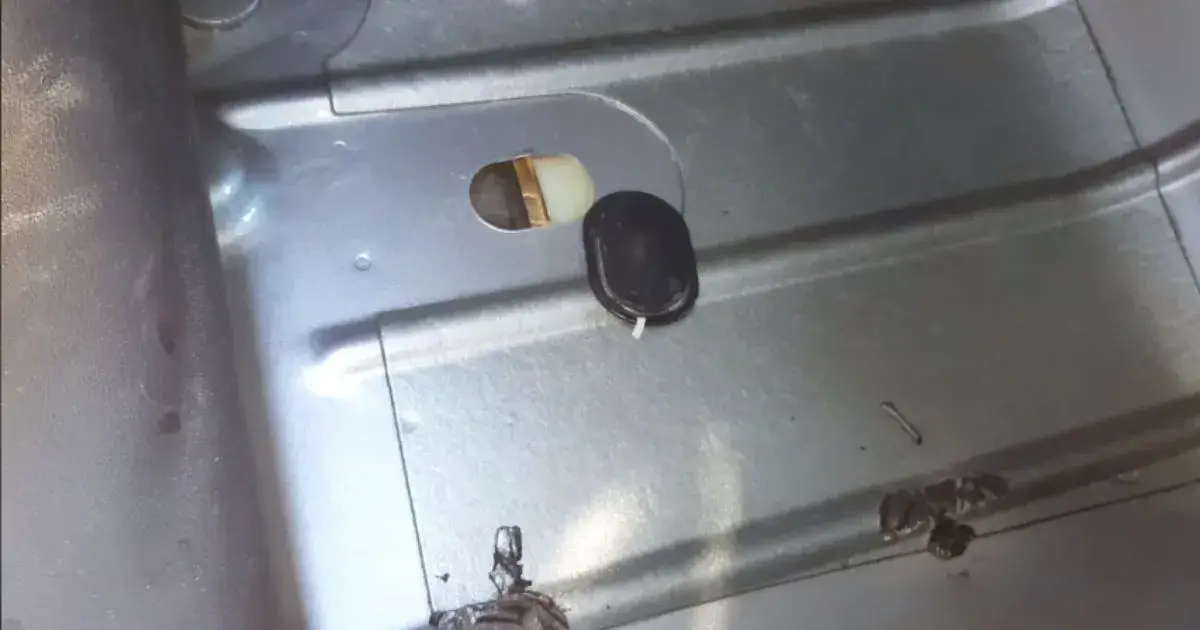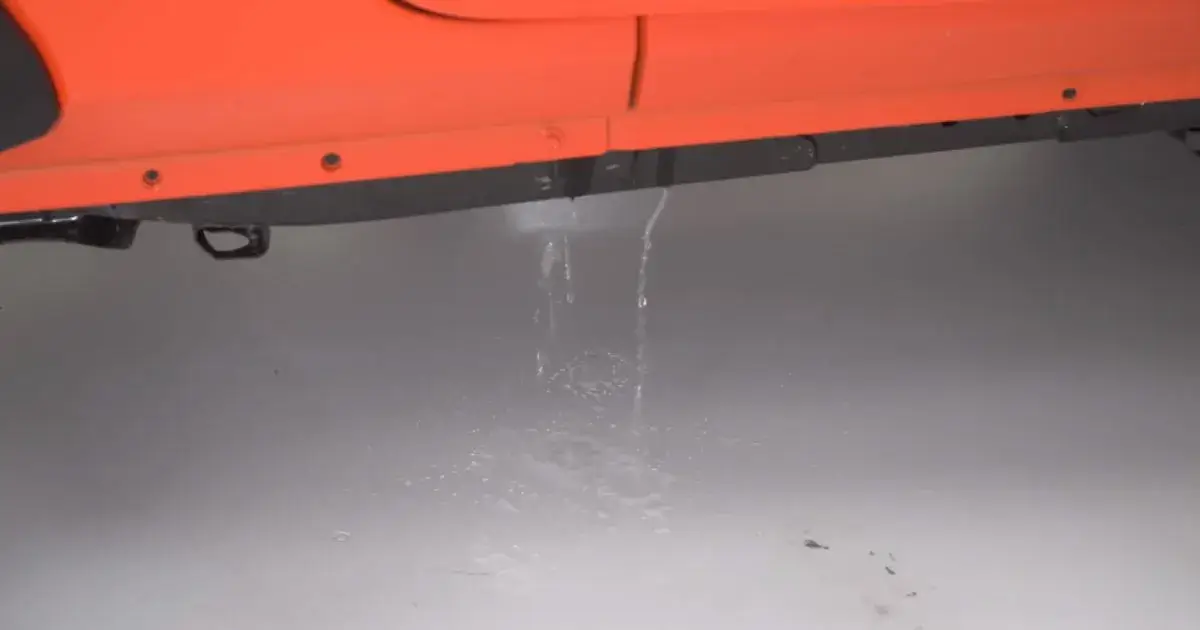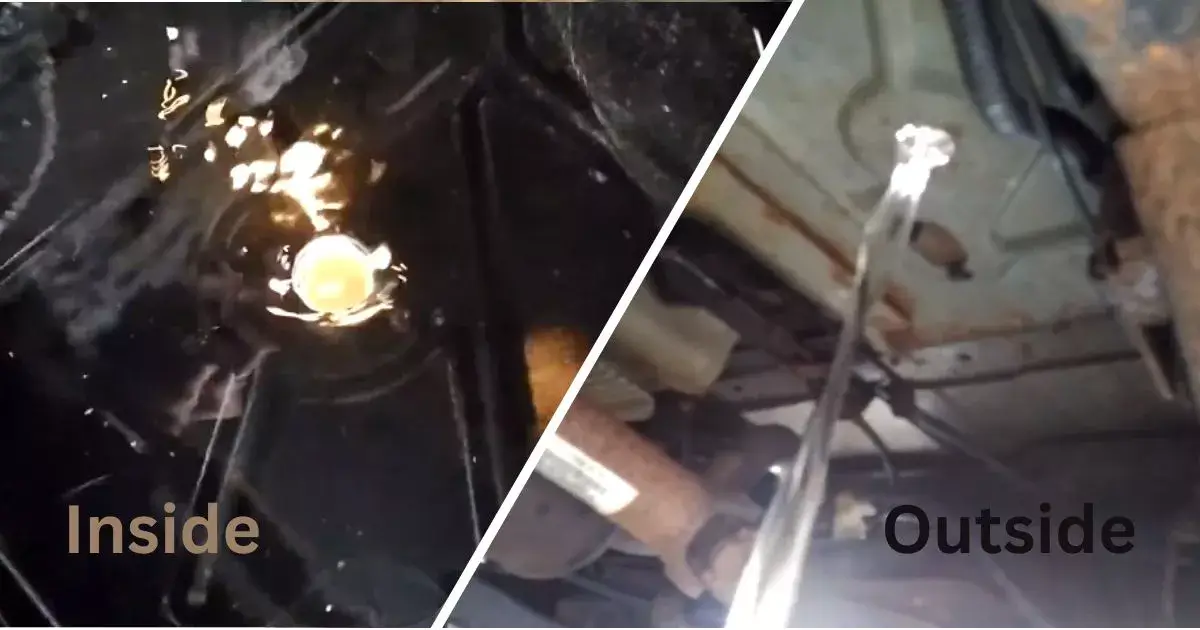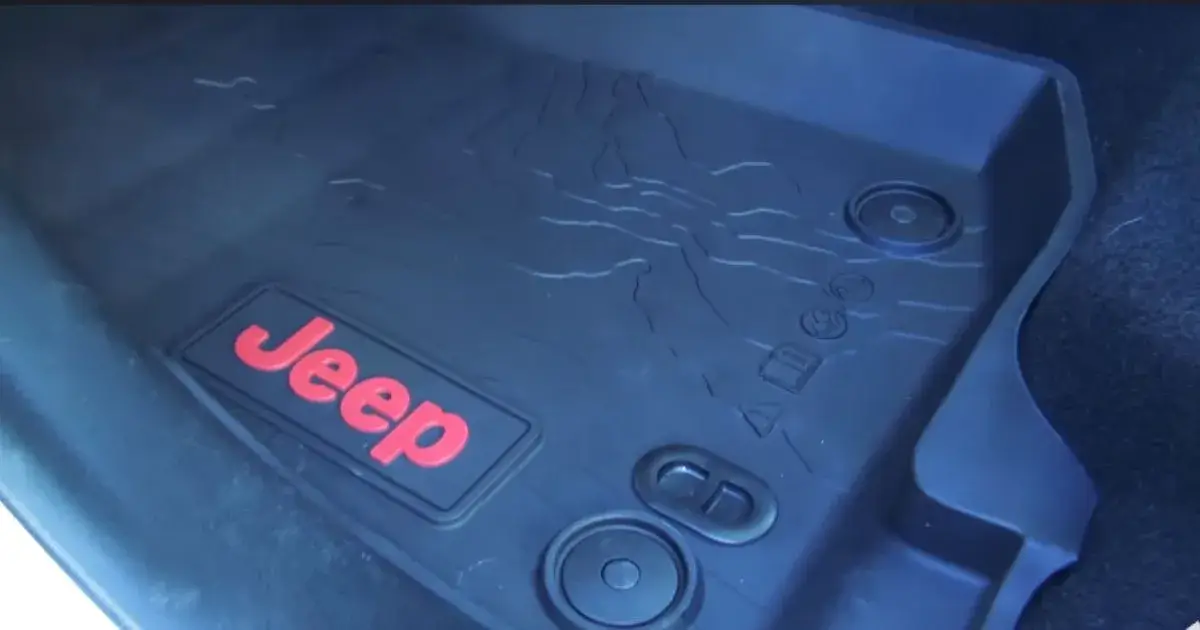Yes, all Jeeps have drain plugs.
If you’re a Jeep owner, you know that taking your ride off-road can be an exhilarating experience. But with all the bumps and dips, there’s always a chance that water can seep into places it shouldn’t. That’s why it’s important to have a drain plug in your Jeep.
These drain plugs are essential for maintaining your Jeep’s health and ensuring that it runs smoothly. Without them, your Jeep’s electrical system damaged due to water accumulation for a long time. So, it’s crucial to check your drain plugs regularly and ensure they’re functioning correctly.
Now that we know that all Jeeps have drain plugs, let’s dive deeper into their significance and how to maintain them properly. We’ll explore the different types of drain plugs, their location, and when to change them.
So, whether you’re a new Jeep owner or a seasoned pro, keep reading to learn more about the essential role that drain plugs play in maintaining your Jeep’s health.

What are drain plugs?
A drain plug is a small device that allows water to drain out of your Jeep’s interior. It’s typically located on the floor of your vehicle, usually at the bottom of the doors or in the rear cargo area. By removing the plug, you can release any water that has accumulated in your Jeep, preventing rust and other damage.
Jeep owners need to ensure that their drain plugs are in good working condition and check them regularly for any signs of wear or damage. If they become clogged or worn out, they can cause leaks or oil buildup, which can lead to significant damage.
There are different types of drain plugs available, including magnetic drain plugs that attract metal debris, making it easier to detect any issues early on. Some plugs also come with valves that allow for easy draining and refilling of fluids.
Changing your drain plugs is relatively easy and can be done at home with the right tools. It’s essential to follow your Jeep’s maintenance schedule and replace them when needed to prevent costly repairs.
Importance of Drain Plugs in Jeeps
1. Prevents water damage: Jeeps are designed for off-roading and can handle water, mud, and other elements that regular cars can’t. But if water is allowed to sit in your Jeep for too long, it can cause serious damage, such as rust and corrosion, damage to electrical systems, and growth of mold and mildew.
2. Easy to use: Drain plugs are small, easy-to-use devices that are typically located on the floor of your Jeep, usually at the bottom of the doors or in the rear cargo area. By removing the plug, you can release any water that has accumulated in your Jeep, preventing damage.
3. Cost-effective: Having a drain plug in your Jeep is a small investment that can save you a lot of money in the long run by preventing costly repairs due to water damage.
4. Suitable for off-roading: If you plan on taking your Jeep off-road, it’s essential to have a drain plug to prevent water from accumulating in your vehicle during the ride.
5. Recommended for rainy areas: If you live in an area with heavy rainfall, having a drain plug is a must to prevent water from seeping into your Jeep and causing damage.
6. Extends the life of your Jeep: Regular maintenance not only prevents damage to your drain plugs but also helps to extend the overall life of your Jeep. This can help you avoid costly repairs and replacements down the line.
Jeep Drain Plugs Maintenance Tips
1. Clean the drain plugs regularly: Dirt, mud, and debris can accumulate on your drain plugs over time, which can prevent them from functioning properly. To avoid this, clean your drain plugs regularly with a damp cloth or a soft brush.
2. Check for damage: Over time, drain plugs can become damaged or corroded, which can compromise their ability to function effectively. To avoid this, check your drain plugs regularly for any signs of damage or wear and tear. If you notice any damage, replace the plug immediately.
3. Lubricate the drain plugs: Applying a small amount of lubricant to your drain plugs can help them function smoothly and prevent them from becoming stuck or difficult to remove. Be sure to use a lubricant that is safe for use with rubber or plastic materials.
4. Replace drain plugs when necessary: Drain plugs are small components, but they play a crucial role in preventing water damage to your Jeep. If your drain plugs become damaged or worn out, replace them immediately to ensure that your Jeep is protected.
5. Avoid using harsh chemicals: When cleaning your drain plugs, avoid using harsh chemicals or abrasive cleaners that can damage the plug or surrounding areas of your Jeep.
6. Store your Jeep properly: If you plan on storing your Jeep for an extended period, make sure to remove the drain plugs to prevent water from accumulating in your vehicle. This will help to prevent damage and ensure that your Jeep is ready to go when you’re ready to hit the road again.

Jeep Wrangler Drain Plugs How to Remove
If you own a Jeep Wrangler, you know that there are a lot of different parts that need to be maintained. One important part is the drain plug. The drain plug helps to remove any water or debris that has accumulated in your Jeep’s engine.
Here is a step-by-step guide on how to remove your Jeep’s drain plug:
1. Start by disconnecting the negative battery cable. This will help to prevent any electrical issues while you’re working on your Jeep.
2. Next, locate the drain plug which is usually located near the oil filter.
3. Use a wrench to loosen the drain plug and then carefully remove it. Be sure to catch any fluids that may drip out in a pan or container.
Jeep Wrangler Jk Drain Plugs Location
If you own a Jeep Wrangler JK, you know that there are drain plugs located on the bottom of the vehicle. These drain plugs are there to allow water and other fluids to drain out of the vehicle. If you’re wondering where these drain plugs are located, we’ve got you covered.
In this blog post, we’ll show you exactly where to find them. The first step is to locate the front differential. This is typically located near the front wheels of your Jeep.
Once you’ve found it, look for two small holes on the bottom of the differential. These holes are where the drain plugs are located. To remove the drain plugs, simply use a wrench or socket set to loosen and remove them.
Be sure to have a catch pan handy, as fluid will begin draining out immediately. Once both plugs are removed, allow all of the fluid to drains out completely before re-installing the plugs. That’s all there is to it!
Now you know how and where to find your Jeep Wrangler JK’s drain plugs.

Jeep Wrangler Jl Drain Plugs Location
If you own a Jeep Wrangler JL, you know that there are drain plugs located on the bottom of the vehicle. These plugs are essential for draining fluids and keeping your Jeep clean. But what if you can’t find them?
Here’s a quick guide to help you locate the drain plugs on your Jeep Wrangler JL. The first thing you’ll need to do is identify where the drain plugs are located. There are two plugs on each side of the Jeep Wrangler JL, one in front of the rear tires and one behind the front tires.
The best way to find them is to look under the vehicle from the front or back. Once you’ve located both plugs, it’s time to remove them. To remove the drain plugs, simply use a wrench or socket set to loosen and remove them.
Be careful not to lose any washers that may be attached to the plug! With both plugs removed, all that’s left to do is place a catch basin underneath each one and open up the valve to let all of the fluid drain out. And there you have it!
Jeep Jlu Drain Plug Locations
If you own a Jeep JL, you might be wondering where the drain plugs are located. Here is a quick guide to help you find them. The front drain plug is located under the hood, near the firewall on the driver’s side.
The rear drain plug is located in the center of the rear axle, just behind the differential. To remove the plugs, simply use a wrench or socket to loosen them and then let gravity do its job. Once all of the fluid has drained out, replace the plugs and fill your Jeep back up with fresh oil.
2016 Jeep Wrangler Drain Plugs
If you own a 2016 Jeep Wrangler, you may be wondering where the drain plugs are located. Here is a quick guide to help you find them. There are two drain plugs on the 2016 Jeep Wrangler, one on each side of the vehicle.
They are located near the bottom of the doorframe, just behind the front wheels. To access them, simply open the doors and look for the plugs. Each plug has a small hole in it that allows water and other fluids to drain out.
When these holes get clogged, it can cause problems with your Jeep’s drainage system. To clean out the plugs, simply use a small wire or toothpick to clear away any debris that may be blocking the holes. If your Jeep starts to experience any type of water leak, make sure to check the drain plugs first.
By clearing away any blockages, you can help prevent further damage to your vehicle.

FAQs
Do Jeeps Have a Drain Hole?
Yes, most Jeeps have a drain hole. This is so that water and other liquids can drain out of the vehicle and not build up inside. The drain hole is usually located near the bottom of the Jeep, on either side.
Where is the Drain in a Jeep?
There is no universal answer to this question as the location of the drain in a Jeep can vary depending on the model and year of the vehicle. However, some common locations for the drain in a Jeep include under the hood near the firewall, under the rear passenger seat, or behind the front passenger wheel well.
If you are unsure about where your Jeep’s drain is located, it is best to consult your owner’s manual or a professional mechanic.
How Do I Get Water Out of My Jeep?
If you have water in your Jeep, the first thing you should do is identify where the water is coming from. Is it coming in from the door seal? The sunroof? A window?
Once you know where the water is coming in, you can start to work on fixing the issue. If the water is coming in from a door seal, the easiest way to fix it is to replace the seal.
You can buy replacement seals at most auto parts stores. If the water is coming in from a sunroof or window, you will need to reseal those areas with caulking or weather stripping. Once you’ve fixed the source of the leak, you will need to remove all of the water from your Jeep.
Start by taking out all of the floor mats and seats so that you can access all of the carpeting. Use a wet/dry vacuum to suck up as much of the water as possible. If possible, prop open doors and windows so that air can circulate and help dry things out faster.
Once everything has had a chance to dry out completely, put everything back in your Jeep and enjoy being able to drive without worry about flooding!
Where are Drain Plugs Located?
Most cars have a drain plug located under the car near the oil pan. The oil pan is usually located on the bottom of the engine towards the back. Some cars may have the drain plug on the side of the oil pan.
2015 Jeep Wrangler Rubicon Drain Plugs
Final Notes
In conclusion, all Jeeps are equipped with drain plugs. These small components play a crucial role in preventing water damage to your Jeep and ensuring that it stays in top condition for years to come.
Regular maintenance of your Jeep’s drain plugs is crucial to prevent issues and ensure that they’re functioning effectively. By cleaning them regularly, checking for damage, lubricating them, and replacing them when necessary, you can prevent blockages and ensure that your Jeep is protected from water damage.
In summary, drain plugs are an essential component of any Jeep and taking care of them is key to ensuring that your Jeep stays in top condition and is ready for all your off-roading adventures.

